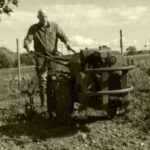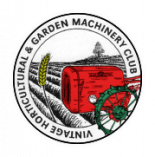Home › Forums › The Main Forum Area › General talk and discussion › When to re-ring
- This topic has 4 replies, 2 voices, and was last updated 10 months ago by
andyfrost.
-
AuthorPosts
-
August 27, 2024 at 12:11 pm #42804
 sidevalve5Participant
sidevalve5ParticipantHave over many years rebuilt a lot of air cooled petrol engines, both motorcycle and industrial types. Wish to open a discussion on the case of when to re-ring, rebore, or retain the existing piston rings.
On several engines I have worked on compression was poor until following a good service, they fired up and after years of being non runners. Subsequently compression was good and they performed well. Others though still had poor compression, it made them difficult to hand start, they smoked, oil consumption was excessive, they wheezed and chuffed like an oil engine. It was then time to take the head off, decarbonize, grind in the valves, have a look at the piston and cylinder. A few years ago I came across one of the biggest manufacturers of piston rings in the world, Hastings Piston Rings. They had a brilliant technical section on their website after reading it I became much more enlightened about when to re-ring.
Many of the rarer engines in older machinery have difficult to find parts. In some cases there are just none now available. Had a Gravely D with rubbish compression, it barely ran and when it did, I had to give it a load of revs. It wobbled around when going too quickly, was not in full control and when I put it to work, stopped dead. So took off the barrel and with the information gained from Hastings could see the rings were shot, but the bore and piston were fine. Tried everywhere to get new rings in the UK, no chance so sent the details off to Hastings. They got back with suitable set of compression and oil scraper ring and a very reasonable quote. They have a dealer in Essex. Had to wait less than two weeks before they were posted to me.
One of the primary purposed of this post is if the bore and piston is OK, the rings (see below) worn and they are not now obtainable. You may go to a ring manufacturer to see if they can help. Got a quote from Dutch company THN-EN Piston Rings for some Jap 5 +0.030” rings which was cheaper than Cox & Turner. But went with the British company as they stocked original parts. Hastings Piston Rings publish a master catalogue with the most popular rings sizes in it. I could have got the Jap 5 rings from them.
The Gravely D is still awaiting restoration, but did rebuild a Model L engine and re-ringed that too. It made a huge difference, starts very easily (the strap takes a bit of pulling to say the least), the exhaust note has a very loud crack to it, tickover is smooth. The Jap 5 is on a Trusty, again starting is easy, the exhaust sounds sweet. Used to have to start it with a strap, it would not go on the handle. Now if I use the strap, have to pull so hard it moves the machine. Three swings of the handle is often all it needs. It will go on one, but the carb is not the best.
Now for the more technical bit. Hastings Piston Rings recommends a maximum of 0.003” bore wear per inch of bore diameter. The original bore size should be at the bottom of the cylinder and will taper outwards towards the top. If the piston’s skirt is in a very poor state, it may have worn the cylinder at the bottom too. But if thats the case, its probably rebore time too.
If you are working from the manufacturer’s metric bore specifications, you will need to do an imperial conversion. To do this multiply the bore diameter in mm by 0.0394 (1mm = 0.0394”). Then ᴨ x D to get the circumference. To check for wear and out of round and without access to a bore micrometer. Either use internal callipers, in conjunction with a micrometer, or accurate vernier callipers. Or a piston ring, but this will not detect out of round. For the ring method, firstly calculate the maximum allowable wear: original bore diameter x 1.003, then calculate the circumference of that sum. The difference between the original bore diameter and the wear in several positions can then be calculated from the ring gaps. These should be taken at 4 equal spaces between the top of the cylinder and the bottom. You may wish to measure the bottom of the bore with internal callipers and check the result against the engine specifications. Just in case there is wear at that point from the piston. Although I have found that engine manufacturer’s bore sizes often are only to 0.1mm and when working in imperial, there can be a difference of a couple of thou after doing the conversion.
Hastings recommends a minimum ring gap of 0.0035” per inch of bore diameter. Therefore bore diameter x 0.0035 = the minimum ring gap. Hastings do not have a maximum ring gap, others have stated it should be 0.005”. If the existing ring gap is over 0.006” I would personally look to re-ring.
In my individual experience it is often the top ring that has the most wear, both off the face and surprisingly axial height (thickness). So would do the checks with both rings and the grooves, the axial height should be 0.001” – 0.003”. Got an Auto Culto with a Villiers Mk VIIC that I have rebuilt, but not put on the barrel yet. When I got the machine was told that the engine had seized years ago, but the bore had only 0.001” of wear, there was no sign of pick up. The ring gap was 0.017” and surprisingly George Shead of Villiers Parts could supply me with a new set. The ring gap is 0.006”, so will use a thin diamond sharpener to open it up a bit.
The post is about re-ringing, but I also would advise if the valves and/or the seats are badly pitted, or pocketed. Would get that sorted by and engine reconditioner. Likewise if the head is a bit distorted, get it skimmed.
Have posted this to assist chaps who like me want to strip down, check and rebuild their engines themselves. Both for cost savings and in my case, the huge satisfaction of getting an otherwise very badly performing engine back into the optimal working condition. Using just the typical range of tools a home workshop would have. Of course those who wish to call on more expert help, may want to pursue that route.
August 31, 2024 at 3:22 pm #42831andyfrost
ParticipantA couple of things , which model Autoculto do you have that has an V11C engine.
You don’t mention valve guides , often a cause of bad running and burning oil.Andy.
September 2, 2024 at 10:49 am #42840 sidevalve5Participant
sidevalve5ParticipantThere were a couple of errors on the original post. The Villiers engine was a VIIIC and the top ring gap ½” up from the bottom of the cylinder 0.063”, the second ring in the same position 0.054”. Also should have said the Hastings recommended clearance between the axial height of the ring AND THE GROOVE should be between 0.001” – 0.003”. Apologises for any confusion.
Hastings Piston Rings have written their advice to include tuned and high performance engines. Ours are on the very opposite end of the scale, so should think the tolerances can be greater than the advised. But the closer you can get to it, the better the performance will be of any engine.
The post was nearly exclusively about re-ringing, when to do it, how to measure a cylinder bore with just a ring and feeler gauges. Also where to get rings if the original parts are no longer available. After disassembly, obviously other aspects of the engine need to be inspected and work undertaken as required. FYI the Gravely D had very worn guides, so had some made by a mate who has an engineering business. The Villiers had worn main bearing bushes and play on the big end. Enquired at a Villiers specialist engine rebuilder and he wanted a huge amount of money to do it. Managed to get the bushes and big end rollers. A vintage motorcycle racer could do the crank, press in the bushes and ensure everything aligns. What surprised me about that engine was the amount of wear on the rings, bushes and big end rollers. Yet the cylinder bore was OK!
Do not wish to get into a ding dong battle of opinions. Will only reply to a comments if I think it will make a positive contribution.
September 2, 2024 at 11:00 am #42841andyfrost
ParticipantI did think it should have been V111C , as they were the model used by Allen and Simmonds. Should you ever need one I have a new piston (cast iron) for one of those , along with a used , but good cylinder barrel.
I would go along with your views and measurements , but as you say , we’re not dealing with formula one engines.
Many years ago I fully rebuilt a 25A on an AutoCulto model L , the crank rebuild cost a small fotune back then , I dread to think what the cost would be today.Andy.
September 2, 2024 at 8:20 pm #42842andyfrost
Participant“What surprised me about that engine was the amount of wear on the rings, bushes and big end rollers. Yet the cylinder bore was OK!”
You have to take into account , that extremely few of the machines that come into our hands are all original , many will have had odd bits and pieces fitted to them to keep them running back in their working days.
Soon after the War , my father bought a ModelL brand new , AutoCultos policy then was to have widespread local dealers , who would stock alot of the essential spares. Our dealer was around 8miles away , when cylinder wear started to give poor performance , Father would take the cylinder there , pay a surcharge and walk out with a rebored barrel and new piston , he did this several times in its working life , and it had a HARD life , but it only had one service exhange crank.
This may go some way to explain your possible mismatch of engine bits.Andy.
-
AuthorPosts
- You must be logged in to reply to this topic.
